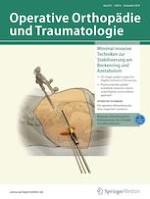Fig. 6a Posterior column screw—fracture type. A 67-year-old man who sustained a bicycle accident with a direct impact on the left hip. The CT scan shows an anterior column with posterior hemitransverse fractures (ACPHF) with a multifragmentary fracture of the anterior column. The quadrilateral plate is internally rotated and in osseous continuity with the posterior column. The posterior hemitransverse fracture is simple as shown in
b.
b Preoperative planning—posterior column screw trajectory. The medial angle of the posterior column screw trajectory is 16° to the sagittal plane (
left) and the posterior angle is 24° to the coronal plane (
right). The maximum screw length is 123 mm.
c Preoperative planning—estimation of the starting point and the endpoint. The starting point and the end point are determined using the LiveSync feature as described in Fig.
3.
d Intraoperative application—fluoroscopic control in anterior–posterior (ap) view. The anterior column fracture was reduced via a modified Stoppa approach and stabilized with two 3.5 pelvic reconstruction plates. The posterior hemitransverse fracture was indirectly reduced by reducing the quadrilateral plate. The starting point for the posterior column screw was approached via a small incision at the iliac crest and submuscular preparation under fluoroscopic control in the ap view. The guide wire was advanced according to preoperative planning (
b). It is advisable to switch to the lateral–oblique view when approaching the hip joint. After predrilling, a cannulated 6.5 mm screw with a 32 mm thread and a length of 115 mm was inserted. The screw length must not be longer than the maximum length determined in preoperative planning, but may be shorter provided that the screw thread completely passes the fracture line. The fluoroscopic control shows a screw trajectory as preoperatively planned (
c).
e Intraoperative application—fluoroscopic control in lateral–oblique view. The left hip joint is located next to the radiation source which results in a “larger” left hip joint. Additionally, the radiation source is tilted 15° upwards resulting in a more posterior projection of the left hip. The lateral–oblique view shows that the screw does not penetrate the hip joint and does not perforate the cortical bone of the posterior column and the sciatic tuber.
f Postoperative CT control. The correct screw trajectory is confirmed in the postoperative CT scan. The posterior hemitransverse fracture is anatomically reduced











